Word work is an essential component of a primary literacy program, but it can be a headache to plan for.
Your classroom contains very early readers with limited skills, accomplished readers working beyond grade level, and others who are difficult to keep engaged with anything.
The task of preparing activities can be daunting every week. How do you create activities that everyone will enjoy? How do you come up with word lists to accommodate every student? How do you do all this and still have time to plan for other subjects?
I've created a program that allows you to differentiate your word work component without pulling your hair out!
This post was featured on the Teachers Pay Teachers Blog.
How to Easily Differentiate Your Word Work Activities
Differentiation is no easy task. Every classroom I've ever taught in has a range of abilities that spans a minimum of four grade levels. From time to time, that gap is even wider!In my classroom, I generally organize my students into three main word work groups. Is this perfect? No. But in the short time that I have for word work activities, and because I have limited planning time (and a life outside of school!), sometimes that has to be enough.
I used to spend hours each week combing through a variety of old spelling resources to create word lists that were just right for all my groups. It was one of the most frustrating parts of my planning process because it felt like time wasted!
After many attempts to streamline this process, I created this simple collection of Differentiated Word Lists that I could pull lists from each week.
How to Get Started
I begin the school year with a Words Their Way spelling assessment to get a handle on where my students fall on the continuum. From there, I can assign them to one of the three lists: List A, List B, or List C.I don't give a paper-and-pencil assessment every week to determine which list will be best for each student. We are well-educated professionals. You know your kids better than anyone. Trust your instincts. I can't think of a single test that will make a more accurate placement decision than you will.
Choice is Powerful!
Using a Daily 5 structure in my classroom, my students and I have many discussions about how to pick a "Good Fit" book, and this also carries over to our word work.I often direct my students to an appropriate word list, but sometimes they surprise me and can do more (or less) than what I am expecting.
I trust my students and have built such strong accountability into my program that I can give them some control and flexibility over which list they use. (You can read more about this in the blog post I've hyperlinked at the end of this one.)
Easy Organization
I keep my lists organized by spelling strategy, although they could be organized by the student as well. I have multiple sets of the three lists attached with a small binder ring, and these hang on magnetic hooks on my chalkboard. (I've also seen utility boards and hooks used for this purpose.)I don't require a set per student since my students are not all working on word work at the same time - this is the beauty of The Daily 5 and especially helpful when you have limited resources!
Create Engaging Word Work Activities
In my many years of teaching experience, I've learned that the best activities are the ones that include manipulatives that my students can handle.
Worksheets are not the answer.
Students who have worksheet after worksheet pushed under their noses become bored, disengaged, and often disruptive.
The centers that I provide to my students can be used with any list of words, making them great for differentiating discreetly. I include many options and give my students their choice over which center they work on.
Wait. You Don't Assign Activities?!
Remember, the power of choice is HUGE!! When students have control over which activities they use, engagement increases! I've seen this year after year!
My students don't ever feel embarrassed about working on something different from their peers because I make every word list look just like the next. Everyone is successful with the centers I've provided since they are simple enough that detailed instructions are not required.
Here are some of the word work activities that I use in my classroom that my students are especially engaged with:
Alphabet Stamps
I grabbed these stamps at Michaels. They were costly, but I did use a 40% off coupon! You can find them in many more stores these days, so keep your eyes open!
The students have been keen to use them. I understand why... I would have loved using these at school when I was a kid!
Chunk Magnets
I inherited these when I moved to my primary classroom, and they are great! A few readers have told me that they may have come from Lakeshore Learning.
Did you notice the blur in the second photo? That's because this student was so engaged with these that I couldn't catch him in a still position!!
Rainbow Words
A simple center to include, but this one really speaks to the more artistic students in the class. :)Bananagrams
I knew this would be one of the most popular choices, and I was right! Typically, it is the first activity to leave the drawer!Other Options I've Offered:
These are some of the favorites that we are currently using, but my word work resource includes options for dry-erase boards, Play-Doh and Play-Doh stamps, stencils, Wikki Stix, letter beads, letter tiles, keyboarding, and Boggle.
Frequently Asked Questions:
Is keeping students engaged an issue? No! That power of choice really does provide the interest and drive that keeps students going.
Are students actually completing the activities while I'm working with other students? Yes! Be sure to check out the linked post at the bottom of this page. In it, I explain all about how I keep my students accountable for their work during independent centers.
Does this take a lot of time to prepare each week? No way! Once the centers are set up once they are good to go. I have four sets of word lists on each letter-sized page, so each week I print 4 pages - yes, you read that right - attach them with the rings, and they are ready for use. I save these from year to year and only occasionally have to replace a set. I do NOT laminate them, although you certainly could.
Word Work Center Storage
I get many questions about storage. I organized my centers in this great storage rack I inherited from another teacher who was purging her classroom! Score! :) It is perfect for these!How Do You Assess Student Work?
I get many questions about how I assess my students' word work. What I don't do is give my students tests. They are not a good use of my time and do not really tell me anything about my students as spellers.
Instead, I look for my students to use the spelling patterns they've learned about and worked with during their daily writing. That transfer from practice to authentic, everyday use matters to me. That's an accurate measure of success.
Instead, I look for my students to use the spelling patterns they've learned about and worked with during their daily writing. That transfer from practice to authentic, everyday use matters to me. That's an accurate measure of success.
If my students struggle with words they've already practiced, we spend time adding them to their personal dictionary/word book, and I encourage them to access the word lists throughout the day during other content writing.
Interested In Trying These?
My students are SO engaged in all parts of The Daily 5 program, but Word Work is the favorite! They love it, but I love it more!I've saved you the work of creating these word lists and hands-on centers for your students.
All these centers PLUS the storage labels, activity sheets, AND an editable package are available in my TpT store! Grab them here:
Need word lists for use with YOUR word work centers? Look no further! I have you covered in a BIG way!!
This more than 2500-page resource is easily assembled either by spelling pattern OR by student and is COMPLETELY EDITABLE!
There is also a single-page printing option included! These are perfect for small-group or homeschool use!
Where Does Online Teaching Fit In?
Physical distancing and online teaching have changed how we look at our classroom resources and the way they are shared, and for the time being, that will impact your hands-on word work program.
There are several ways that you can adjust to account for this:
- Use individual student lists, as mentioned above, rather than shared lists on an interactive word wall.
- Provide students with printable manipulatives so they can each have a set of their own. You can grab a FREE set of upper and lower-case printable letters right here:

- Save yourself a ton of time and provide your students with a digital word work option like the one below:
During the challenging time of online learning, I added a digital word-building resource to my Teachers Pay Teachers store that students can use in Google Slides! You can access that here:
What Actual Teachers Are Saying About These Resources
These two-word work resources have been available in my Teachers Pay Teachers store for several years and have been widely recognized by real teachers like you!
Kimberly says this about the Differentiated Word Lists:
AMAZING!!! I have been searching high and low for a product that has 3 separate lists and these lists are spot-on perfect! You do not even know how much time that will save me. Thanks you!!!!
Shawn has this to say,
OMG - LOVE LOVE LOVE THIS!!! It has changed the way I do spelling. My kids love it too. Cannot say enough GOOD about this!
And about the Word Work Centers, Ruth says,
Absolutely fabulous. The detail in this is amazing. I love the way you have made it so open-ended that it can be applied to any word list. This is all done for you. so much time and planning already done. You are clever! Thank you!
Interested in trying these word lists for FREE? Join my mailing list, and I'll send you some as a thank-you!
You might also be interested in this blog post about keeping your students accountable during center work:
Pin this post!
Want more great teaching resources like this one to use in your classroom?





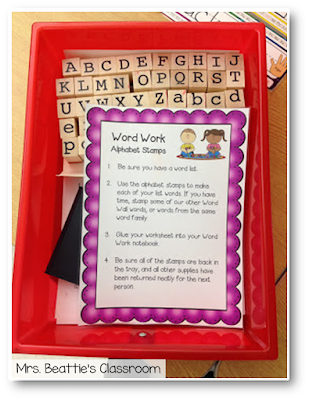
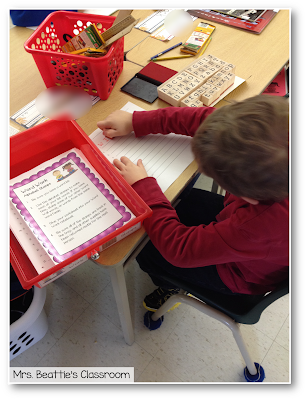

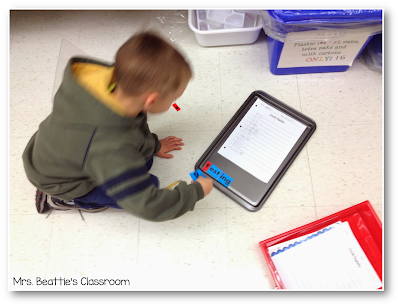



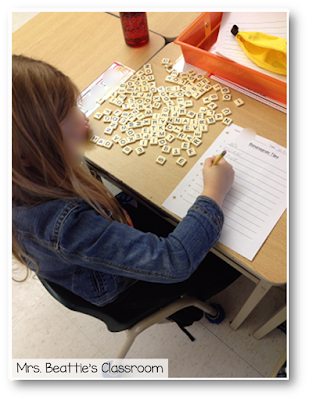


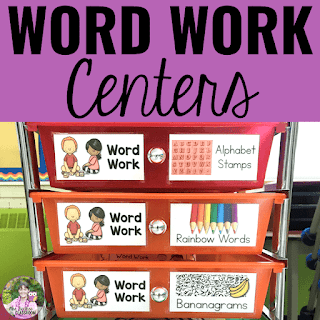

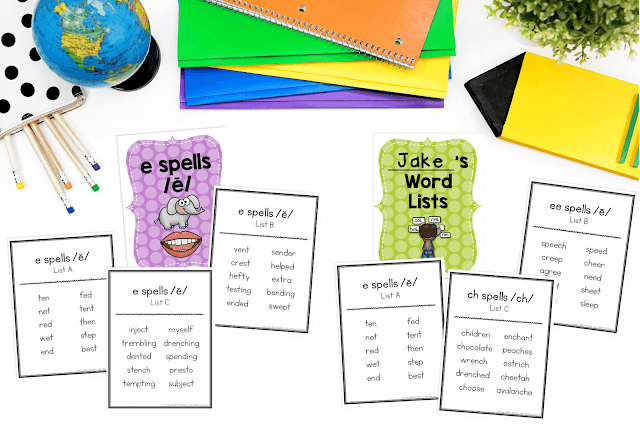
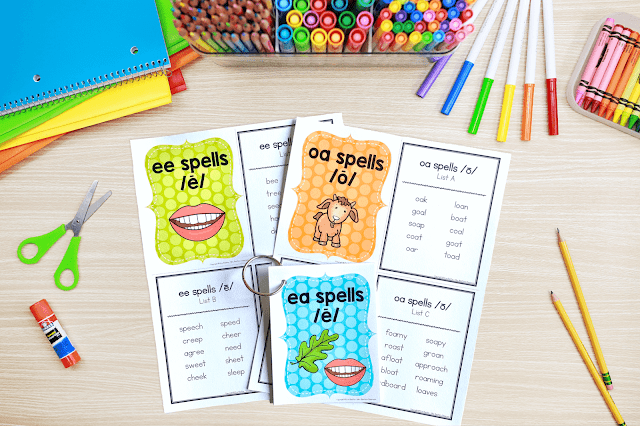


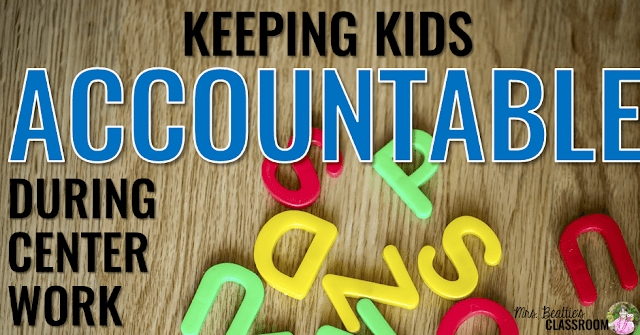



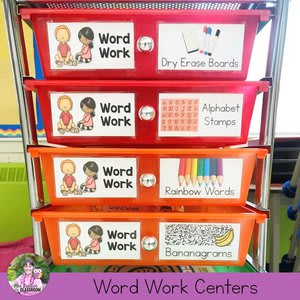
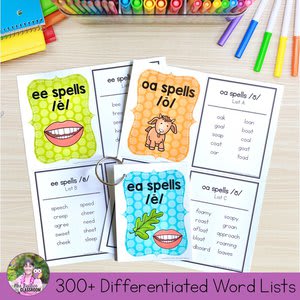




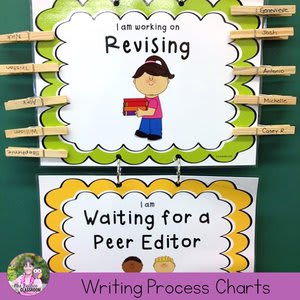






.png)



Love your centers! I was curious... do your students independently remove and return these drawers..? Might seem like an odd question.. I am only wondering because I have the exact same drawer cart, and I am concerned to use it for center work because it can be difficult to put put the drawer back in once it is removed. Especially for my kindergarteners, maybe you have a bit older students..?
ReplyDeleteHi! Thanks for stopping by! So far, so good. The kids have been able to remove the drawers, take them to their chosen work area, and return them independently. A couple of students have had a little trouble putting those drawers back in, but they are quick to help each other out! :) I do teach 2nd and 3rd grades though, so they are a little older than your little ones.
Delete~Erin
I let my 1st graders return the drawers. I teach them how to do it properly. I had a block of 15 minutes where I demonstrated how to do it. First, I did it the right way and wrong way. Then, I had a student show me the right and wrong way. Students provided feedback on how to improve. Then I took out all of my drawers and had each student put a box away. This taught my students how to be patient and help each other. I do this for my math centers.
DeleteWhen I go to Facebook, there are no products under Fan Freebies. Am I looking in the right place? I love your products by the way :)
ReplyDeleteThank you SO much for pointing that out! My fangate host seems to have updated their platform since I posted the last freebie, and while I can see them in my set-up screen you're right - they are not appearing on my page. :( I am out of town, but hoping that I can have them up and running later today. If you're following my Facebook page I will post an update when they are working again!
DeleteThanks again!!
~Erin
I want to be in our class! Everything looks so FUN! Thanks for these great ideas!
ReplyDeleteThank you!! :)
DeleteHey Erin! I have this exact cart and I need to put it too better use! Love your idea! Just curious if you have the labels available anywhere?
ReplyDeleteHi Bridgett!
DeleteThanks for stopping by! I do have labels available! They are included in my word work centers package. You can grab them by clicking the Word Work Centers image at the bottom of the post.
Enjoy!
~Erin
What are the drawer dimensions? Most of the drawer carts have shallow drawers?
ReplyDeleteHi Tami!
DeleteThe cart is just like this one, available on Amazon: http://ow.ly/4mLp3R
~Erin
Love your centers! Any idea where to purchase word chunk magnets like you have? I haven't been able to find them online, but they look super cool!
ReplyDeleteThanks, Liv! Unfortunately, I have no idea where they come from. I inherited them when I moved from Grade 5 to Grade 2/3 three years ago. Thanks for stopping by! :)
DeleteErin
This comment has been removed by a blog administrator.
DeleteHi Erin! Do you use these centers for 2nd grade? I am starting 2nd grade this year from teaching 5th. I'm trying to find new grade appropriate centers for the 2nd graders.
ReplyDeleteHi Amy!
DeleteThanks for stopping by! I sure do use these with 2nd grade students. I've taught 2/3 for the past three years and this is what I've been using, along with my differentiated word lists (bit.ly/WordLists)! :)
Hope that helps!
Erin
Hi! You have such wonderful resources. I love your stamina and 3 ways to read a book anchor chart! Is it possible to send me the link for both those charts!? I printed them in the beginning of the school year and would love a fresh copy. Thanks so much!
ReplyDeleteHi there!
DeleteThanks so much for the lovely complement! Unfortunately, I am unable to share the posters any longer. The 2 Sisters, who created The Daily 5 program, have changed their position on sharing freebies, so to do so would be copyright infringement and breaking the law.
Thanks for stopping by!
Erin
The magnet chunks come from Lakeshore.
ReplyDeleteGreat to know, Stephanie! Thank you!
DeleteGlad you stopped by!
Erin
Hi Erin,
ReplyDeleteLast year I managed to get your freebies of stamina, Ipick and 3 ways to read a book. Is it possible to get these again, as I have moved schools and do not have the digital copy.
They are a wonderful resource
Victoria
Hi Victoria!
DeleteThanks so much for the lovely complement! Unfortunately, I am unable to share the posters any longer. The 2 Sisters, who created The Daily 5 program, have changed their position on sharing freebies, so to do so would be copyright infringement and breaking the law.
Thanks for stopping by!
Erin
I bought both the word cards and the word work centers. They have made my life so much simpler. I set it up very similar to how you have and I love it!!
ReplyDeleteI'm so glad to hear that, Alicia! Thanks for taking the time to share your thoughts! :)
DeleteErin
Erin,
ReplyDeleteYou said you introduce the pattern to the whole class-so are the lists differentiated but based on the same word family?
Thanks!
Katie
That's it exactly, Katie! You can grab a free sample right here in this post if you'd like to take a closer look! :)
DeleteThanks for stopping by!
Erin
Hello,
ReplyDeleteLooking to differentiate more. I use WTW for assessment and groupings and I already do similar activities, rubber stamps and rainbow words, etc but needing to find out more about your patterns on cards with rings, right now we do a pattern, so this week it was long e and last week it was short e (I teach grade 3). So I always just have one list with the words that follow the pattern. But how do you do this ...you seem to have a set of cards for each patters. So let's take ee/ea for example, so you would have 3 or 4 cards with simplier words on some ?
Sorry if my question is confusing,
Hi Traci!
DeleteEach pattern set has three lists that get a little more challenging. You can grab a free sample to check them out here: http://www.subscribepage.com/j3b5w6
Hope that helps!
Erin
One more question...what about high frequency sight words, where do they fit in your spelling programs. For example, right now I have the spelling pattern focus of the week but then I also add 5 words from the no excuse list (high frequency grade leave words...said, favourite, really....)
ReplyDeleteWe usually tackle those on an individual basis, depending on each student's needs, using my personal word books. I have a HUGE range of ability and need in my classroom, so no one list is ever just right. You can take a look at those here: http://ow.ly/NhJP30fIm2L
DeleteFeel free to email me at questions@mrsbeattiesclassroom any time!
Erin
Hi Erin, I purchased your word lists and am organizing them now. My question, what is the scope and sequence (or pacing guide) that you use? I realize you assess to see which individual list given the spelling pattern, but which pattern is taught first, second etc.? My district doesn't provide spelling lists or pacing guides. Thanks for you comments. Marsha.....ivanym49@gmail.com
ReplyDeleteHi Marsha!
DeleteI don't necessarily use any one pacing guide to drive my instruction, but rather let the strengths and needs of my students be my guide. As I indicate in this post, I begin with the Words Their Way assessment, which tells me a great deal about what my students already know, and where the gaps are. This is what I use when I am trying to determine which lists to introduce next.
I hope that helps a little!
Erin
Did I see somewhere that the spelling lists for words their way are already on spelling city? How do you access that? Thanks!
ReplyDeleteYou sure did! The instructions are included in your purchase. :) Enjoy!
DeleteErin
Hey!
ReplyDeleteI LOVE this idea of using word list for students to use work on words they need during word work time. I have one question- Do you tell you students which list to use during word work time? or do they refer to something to remind them of their word list. I was curious how they remember which list to use. I am teaching first grade and I want to implement word work this way, but wanted to make sure I do it effectively.
Thanks so much!
Hi there!
DeleteThanks for stopping by! Within the pattern they're focusing on for the week I give students freedom to work with each of the three lists as they choose. I've always found that they will gravitate to a list that challenges them without being too difficult. Rarely do the kids choose the easiest words to practice with. Occasionally, someone may need a nudge to try a more challenging set of words or something less challenging, but I believe in the power of choice. There's no right or wrong way, though! You could assign a specific list if that makes you more comfortable.
Reach out any time!
Erin
Hi Erin. I use Daily 5 and Words Their Way in my classroom as well. I’m wondering if you have any suggestions on how to how to incorporate “The Science of Reading” into this framework? We will be using these research based activities to teach reading in September. Thanks in advance for your input.
ReplyDeleteHi Robyn,
DeleteI'm not familiar with "The Science of Reading" as an approach, so I really can't comment. Feel free to email me and we can chat about it!
Erin